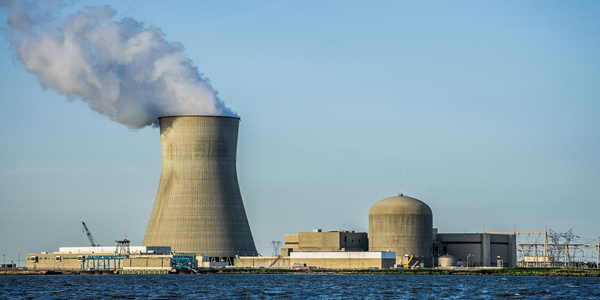By Christen Smith
New Jersey regulators approved zero-emission credits totaling $300 million for all three of the state’s nuclear reactors on Thursday, nearly a year after the governor signed off on an ambitious energy plan aimed at boosting the use of carbon-free resources to 50% over the next decade.
The state Board of Public Utilities permitted the subsidies for Public Service Electric and Gas’ Hope Creek Nuclear Generating Station and Salem Nuclear Power Plant — co-owned by Exelon — after determining the facilities qualified for relief because financial strain could shutter them within three years. To qualify for ZECs, the plants must be licensed by the U.S. Nuclear Regulatory Commission through 2030, contribute to the state’s improved air quality and not receive any other subsidies.
“We do not make this decision lightly, and the board must balance protecting ratepayers with our responsibility to the citizens of the state,” BPU President Joseph Fiordaliso said in a news release on Thursday. “We have a moral obligation to our fellow citizens to do everything we can to decrease carbon emissions. In making this decision, the board considered fuel diversity, resiliency, [the Regional Greenhouse Gas Initiative], the New Jersey economy and environmental impact, and we’ve concluded that now is not a time to move forward in a way that will remove nuclear from our energy mix and ultimately increase air pollution and carbon emissions in our state.”
The plants will receive ZECs for three years and the balance of the first energy year following selection. They will be subject to review by the BPU for additional three-year periods.
The board said nearly 40% of New Jersey’s emissions-free energy comes from nuclear power, making it the largest source of carbon-free energy in the state.
In 2016, according to the U.S. Energy Information Administration, the combined generation of the Salem and Hope Creek plants was 25.3 million MWh, 33.6% of the state’s 75.4 million MWh usage. The state’s Office of Legislative Services calculated that a 0.4-cents/kWh charge assessed on ratepayers would generate $301.4 million based on 2016 consumption, translating to a ZEC cost of about $10/MWh.
“We are pleased with the decision to award ZECs to PSE&G to help support New Jersey’s primary supply of zero-carbon electricity,” PSE&G said in a press release. “The BPU just saved the people of the state hundreds of millions of dollars in what would have been higher energy costs, thousands of jobs lost and tons of environmentally damaging air emissions.”
Critics argue the “bailout” money would be better invested in renewable resources like wind and solar.
“When they are saying they are doing it for climate change, they are putting out more hot air,” said Jeff Tittel, director of the New Jersey chapter of the Sierra Club. “It’s going to end up undermining our renewable energy programs, especially offshore wind and solar.”
Tittel described Thursday as “one of the most shameful days” in BPU history because he said commissioners pushed through the largest corporate subsidy in state history without any justification.
“Their own independent consultant said the subsidy wasn’t needed,” he said. “Even the commission said PSE&G didn’t qualify based on financial needs. So really the height of hypocrisy was them basing it on clean energy goals.”
Illinois and New York approved ZECs for their nuclear plants in 2016 and 2017. State legislators in Pennsylvania, Ohio and Maryland are mulling similar legislation.



